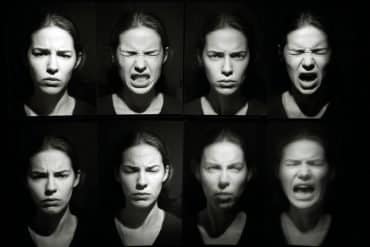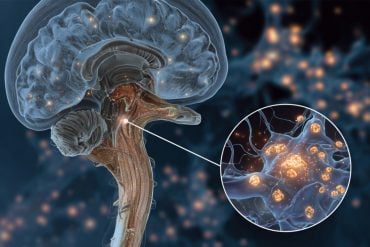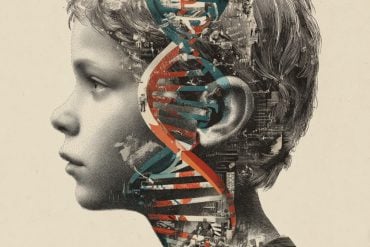Summary: Contrary to popular assumption that areas of the brain responsible for memory are fully matured by age six, researchers report the maturation process continues until the age of at least 14.
Source: Max Planck Institute.
High-resolution imaging provides new insights into the development of the human brain.
In contrast to previous assumptions, the hippocampus, a brain structure that is central to learning and memory, does not complete its maturation until adolescence. Scientists of the Max Planck Institute for Human Development, the Max Planck UCL Centre for Computational Psychiatry and Ageing Research, and the University of Stirling were able to show this for the first time using high-resolution magnetic resonance imaging. The study’s findings were recently published in the scientific journal Proceedings of the National Academy of Sciences of the United States of America (PNAS).
If you ask younger children what they had for supper the evening before, they are likely to respond with a general statement rather than exact details. For instance, they say “cheese” rather than “cheddar”. Children are good at categorizing experiences, but not as good at remembering details. Despite these observations, most researchers assumed that brain regions that are responsible for memorizing and recalling details are already fully mature by the age of six years. This new study now shows that the maturation process lasts until the age of about 14 years.
In order to reach this conclusion, the scientists of the Max Planck Institute for Human Development, the Max Planck UCL Centre for Computational Psychiatry and Ageing Research, and the University of Stirling utilized new high-resolution measurement and analysis techniques in magnetic resonance imaging (MRI). The hippocampus, a region deep inside the brain, plays a central role for memorization and recall of details, as well as general memory performance. Using high-resolution imaging the scientists were able to obtain information about the sizes of different subregions of the hippocampus.
The study involved 70 children and adolescents aged 6 to 14 years as well as 33 young adults aged 18 to 26 years. „Looking at the images, we quickly realized that the age differences in the subregions do not follow a standard pattern and a lot is still happening beyond the age of six,“ says Attila Keresztes, first author and scientist at the Center for Lifespan Psychology of the Max Planck Institute for Human Development.
A special task assessed whether the participants remember details of objects or their general characteristics. For instance, they were shown pictures of a telephone or a book. Later on in the task, these pictures were shown with minor changes and mixed between new pictures. The participants were then asked to indicate whether they had seen the respective object before, and if so, whether it had changed as compared to the first run.

The scientists also examined how the development of the hippocampal subregions is associated with age. In particular, two subregions showed age-related differences linked to differences in memory for details: the dentate gyrus, whose function consists in, among others, the separation of features so that they can be recalled separately, and the entorhinal cortex, whose cortical connections contribute to memory formation, stabilization, and retrieval.
“The insight that these two subregions and the hippocampus as a whole only complete their maturation in adolescence has changed our perspective on the development of learning and memory. We are now asking how the late maturation of the hippocampus influences its interactions with other brain areas. We will examine this in depth in further studies,” says Markus Werkle-Bergner, project head at the Center for Lifespan Psychology of the Max Planck Institute for Human Development, who led this study together with Yee Lee Shing of the University of Stirling.
Source: Markus Werkle-Bergner – Max Planck Institute
Image Source: NeuroscienceNews.com image is credited to Axel Griesch/MPG.
Original Research: Abstract for “Hippocampal maturity promotes memory distinctiveness in childhood and adolescence” by Attila Keresztes, Andrew R. Bender, Nils C. Bodammer, Ulman Lindenberger, Yee Lee Shing, and Markus Werkle-Bergner in PNAS. Published online August 7 2017 doi:10.1073/pnas.1710654114
[cbtabs][cbtab title=”MLA”]Max Planck Institute “Memory For Details Matures Gradually.” NeuroscienceNews. NeuroscienceNews, 26 September 2017.
<https://neurosciencenews.com/memory-maturing-neuroimaging-7583/>.[/cbtab][cbtab title=”APA”]Max Planck Institute (2017, September 26). Memory For Details Matures Gradually. NeuroscienceNews. Retrieved September 26, 2017 from https://neurosciencenews.com/memory-maturing-neuroimaging-7583/[/cbtab][cbtab title=”Chicago”]Max Planck Institute “Memory For Details Matures Gradually.” https://neurosciencenews.com/memory-maturing-neuroimaging-7583/ (accessed September 26, 2017).[/cbtab][/cbtabs]
Abstract
Hippocampal maturity promotes memory distinctiveness in childhood and adolescence
Adaptive learning systems need to meet two complementary and partially conflicting goals: detecting regularities in the world versus remembering specific events. The hippocampus (HC) keeps a fine balance between computations that extract commonalities of incoming information (i.e., pattern completion) and computations that enable encoding of highly similar events into unique representations (i.e., pattern separation). Histological evidence from young rhesus monkeys suggests that HC development is characterized by the differential development of intrahippocampal subfields and associated networks. However, due to challenges in the in vivo investigation of such developmental organization, the ontogenetic timing of HC subfield maturation remains controversial. Delineating its course is important, as it directly influences the fine balance between pattern separation and pattern completion operations and, thus, developmental changes in learning and memory. Here, we relate in vivo, high-resolution structural magnetic resonance imaging data of HC subfields to behavioral memory performance in children aged 6–14 y and in young adults. We identify a multivariate profile of age-related differences in intrahippocampal structures and show that HC maturity as captured by this pattern is associated with age differences in the differential encoding of unique memory representations.
“Hippocampal maturity promotes memory distinctiveness in childhood and adolescence” by Attila Keresztes, Andrew R. Bender, Nils C. Bodammer, Ulman Lindenberger, Yee Lee Shing, and Markus Werkle-Bergner in PNAS. Published online August 7 2017 doi:10.1073/pnas.1710654114






